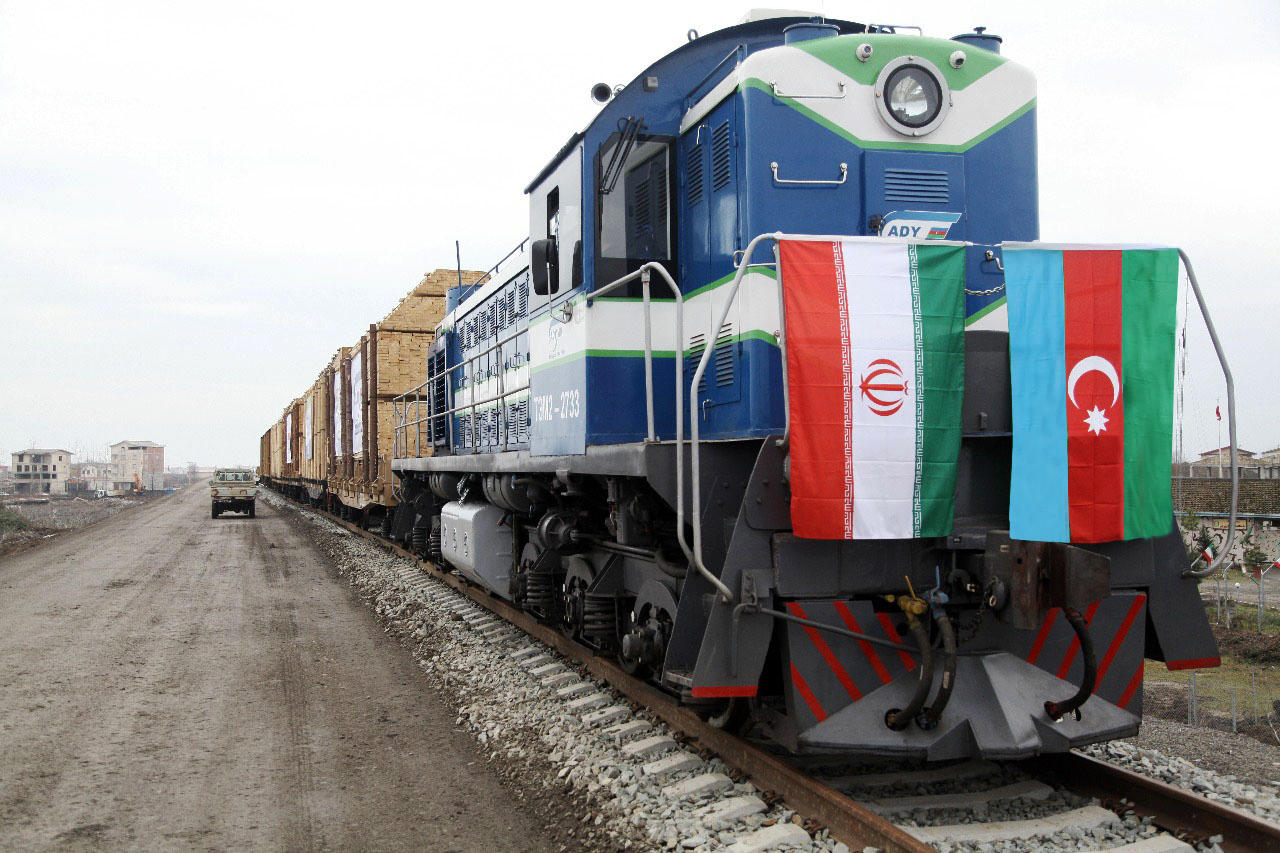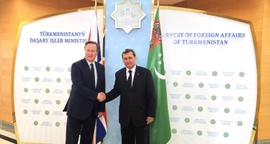The exchange of goods between Iran and Azerbaijan recorded a 33% growth in the last nine months, a senior railroad official in Iran said.
“The exchange of non-oil products via rail between Tehran and Baku increased by 33% from March 21 to December 22, 2023, compared to the same period last year,” Gholam-Hossein Valadi, director general of Iran’s North Railway Administration-2, said, referring to the volume of imports, exports and the transit of cargo at the Astara Border Terminal.
Nearly 498,000 tons of goods were exchanged at the Astara Border Terminal, Iran’s Tasnim news agency reported on January 11.
He added that 152,268 tons of non-oil products were imported into Iran from Azerbaijan via rail in this period, showing about a 63% hike year-on-year. He stated that over 93,000 tons of goods had been imported into Iran from Azerbaijan from March 21 to December 22, 2022.
More than 136,000 tons of goods were exported from Iran via the Astara Border Terminal through the rail network between March 21 and December 22, 2023.
The official said that cement, chemicals, tiles and food products were among the main products exported to Azerbaijan via rail, while wood, lumber, chemicals, grains, etc. were among the most important products imported from Azerbaijan.
According to the Azerbaijan Railways company, the volume of cargo traffic through Azerbaijan’s Astara terminal near the Iran border in 2023 was about 700,000 tons.
"Currently, the construction of a single-span road bridge, a three-span Kemerband bridge, four single-span railway bridges, 10 service buildings and two platforms is underway at the terminal. When these works are completed in 2024, the cargo handling capacity will increase to 3.5-4 million tons per year,” the report added.
Azerbaijan and Iran have also agreed to establish new transport and electricity supply links connecting mainland Azerbaijan to its exclave of Nakhchivan via Iran. In October 2023, the construction operation of the Aghband road bridge over the Araz River kicked off as a new transport link between the East Zangazur economic region of Azerbaijan and Nakhchivan through Iran’s territory.
Azerbaijan also supports the construction of a railway segment of the International North-South Transport Corridor (INSTC), specifically the Astara-Rasht railroad.
According to a contract between Iran and Russia for the construction operation of the Astara-Rasht Railway, the 162-km railway will be constructed through a financing scheme by the Russian side.
In May 2023, Russia announced its cooperation with Iran to build the Astara-Rasht railroad. Moscow has issued a $1.3 billion inter-state loan to finance the project, which will require a total investment of $1.6 billion. In line with the agreement, the construction will take four years, and currently, designing and geological prospecting are already underway.
The INSTC transportation capacity will increase threefold, from the current 15 million tons to 41-45 million tons of cargo per year by 2030, according to Russian First Deputy Prime Minister Andrei Belousov.
It is noteworthy that in 2023, rail transit between Iran and Azerbaijan recorded a 47% growth with the transit of 700,000 tons of freight.
The North-South Corridor, spanning 7,200 kilometers from India to Russia, comprises a multi-modal mix of rail, road, and sea transport routes, optimizing intercontinental trade among participating states and other stakeholders.
This corridor connects Europe, the countries of the Persian Gulf, and the Indian Ocean. Both the Western and Eastern routes of the corridor pass through Iran, with the Western route also traversing Azerbaijan, while the Eastern route extends through Kazakhstan and Turkmenistan. Furthermore, it is expected to facilitate direct sea transportation from Russia via the Caspian Sea to Iran.







 Kyrgyzstan has joined the extensive reconstruction efforts in the Karabakh region of Azerbaijan, after a series of mega initiatives were launched b...
Kyrgyzstan has joined the extensive reconstruction efforts in the Karabakh region of Azerbaijan, after a series of mega initiatives were launched b...
 Turkmen President Serdar Berdimuhamedow and British Secretary of State for Foreign Affairs, Commonwealth Affairs, and Development David Cameron dis...
Turkmen President Serdar Berdimuhamedow and British Secretary of State for Foreign Affairs, Commonwealth Affairs, and Development David Cameron dis...
 A draft resolution aimed at preventing the development and deployment of weapons of mass destruction (WMDs) in outer space, co-sponsored by Japan a...
A draft resolution aimed at preventing the development and deployment of weapons of mass destruction (WMDs) in outer space, co-sponsored by Japan a...
 Russia and Ukraine have engaged in direct negotiations facilitated by Qatar to address the exchange of children affected by the ongoing conflict.
Russia and Ukraine have engaged in direct negotiations facilitated by Qatar to address the exchange of children affected by the ongoing conflict.



